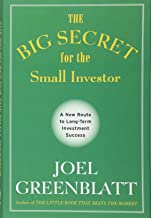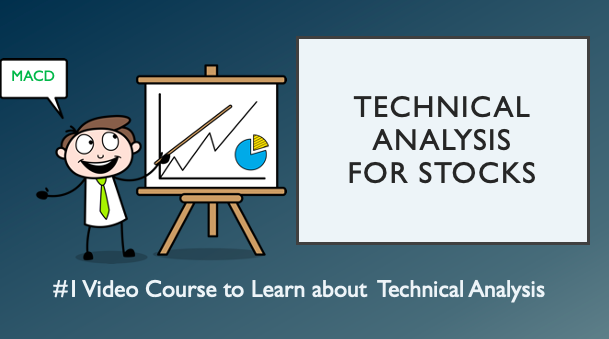Book Summary of The Big Secret for the Small Investor
by Joel Greenblatt

What is the book about?
"The Big Secret for the Small Investor" by Joel Greenblatt is a guide aimed at helping individual investors navigate the complexities of the stock market. The book challenges conventional investment methods, like picking individual stocks or relying on professional fund managers, by highlighting their pitfalls. Instead, Greenblatt introduces a simplified investment approach designed to help small investors achieve long-term success. The book emphasizes the importance of understanding the value of a business and then paying less for it, while also critiquing traditional methods like index funds and active management.
Who should read the book?
This book is ideal for small investors, both novice and experienced, who are looking for a straightforward and effective strategy to grow their investments over the long term. It's also beneficial for those who have struggled with traditional investing methods or are skeptical of relying solely on professional money managers. Business school students and those with an interest in finance might also find it insightful, as it covers investment concepts in a clear and engaging manner.
10 Big Ideas from the Book:
- Value Investing Simplified: The core of successful investing is understanding the value of something and then buying it for less.
- Challenges of Stock Picking: Individual stock picking is challenging and often unfruitful for most investors due to the complexities involved in evaluating future earnings.
- Pitfalls of Professional Management: Professional money managers often underperform the market due to fees, constraints, and the difficulty of consistently beating the market.
- Index Funds Critique: While traditional index funds are popular, Greenblatt argues that they are flawed and often lead to subpar returns.
- The Magic Formula: Greenblatt presents a "magic formula" investing strategy that focuses on buying good companies at bargain prices, simplifying the investment process.
- Small Cap Advantage: Smaller companies often offer better investment opportunities because they are less covered by analysts and more difficult for large funds to buy into.
- Behavioral Economics: The book discusses how psychological factors influence investment decisions, often leading to poor outcomes.
- Efficient Market Hypothesis (EMH): Greenblatt critiques EMH, suggesting that the market is not always perfectly efficient, providing opportunities for savvy investors.
- Alternative Investment Approaches: Greenblatt explores various alternative investment strategies that can offer better returns for small investors.
- Long-Term Perspective: The importance of maintaining a long-term perspective in investing to ride out market fluctuations and capitalize on growth over time.
Summary of "The Big Secret for the Small Investor" by Joel Greenblatt
Overview:
Joel Greenblatt’s "The Big Secret for the Small Investor" is a guide aimed at equipping individual investors with a straightforward yet effective strategy for long-term investment success. Greenblatt critiques traditional investment methods, highlighting their limitations, and introduces his "magic formula" approach as a viable alternative. This book is particularly valuable for those who find stock picking or relying on professional managers challenging or unproductive.
Key Concepts and Insights:
-
Understanding Value:
- The central theme of the book revolves around value investing, which Greenblatt simplifies to the principle: "Figure out the value of something and then pay a lot less."
- Greenblatt emphasizes the difficulty of accurately predicting future earnings and valuation, but argues that understanding a company’s intrinsic value is crucial for investment success.
-
The Problem with Traditional Methods:
- Stock Picking: Most individual investors lack the expertise and time to effectively pick stocks. Greenblatt points out that without a deep understanding of how to value a business, stock picking is often a gamble.
- Professional Management: He critiques the performance of professional fund managers, noting that after fees and expenses, most underperform the market over time.
- Index Funds: While they are a popular choice for passive investing, Greenblatt argues that traditional index funds have inherent flaws and often lead to mediocre returns.
-
The Magic Formula:
- Greenblatt introduces his "Magic Formula," a simple yet effective investment strategy designed to identify high-quality companies trading at attractive prices.
- Key Components of the Magic Formula:
- Return on Capital (ROC): This measures how efficiently a company generates profits from its capital. A high ROC indicates a company is making good use of its capital to generate profits.
- Earnings Yield: This is a measure of how much a company earns relative to its market price. A high earnings yield indicates a potentially undervalued company.
-
Significance of Key Metrics:
- Return on Capital (ROC):
- Formula: ROC = EBIT / (Net Working Capital + Net Fixed Assets)
- Significance: ROC is crucial because it tells investors how well a company is using its capital to generate earnings. A higher ROC typically indicates a company with a competitive advantage.
- Earnings Yield:
- Formula: Earnings Yield = EBIT / Enterprise Value
- Significance: This ratio helps investors determine if a stock is cheap relative to its earnings. A higher earnings yield suggests that the stock is undervalued, making it an attractive investment.
- Return on Capital (ROC):
-
Behavioral Economics and Investing:
- Greenblatt discusses how psychological factors can lead to poor investment decisions, such as panic selling during downturns or irrational exuberance during bubbles.
- He emphasizes the importance of discipline and sticking to a strategy, especially one as straightforward as the Magic Formula, to avoid common behavioral pitfalls.
-
Small-Cap Advantage:
- The book highlights the benefits of investing in smaller companies (small-caps), which are often overlooked by large institutional investors.
- Small-caps can offer significant opportunities because they are less covered by analysts and can be undervalued due to the lack of attention.
-
Long-Term Focus:
- Greenblatt advocates for a long-term investment perspective, stressing that short-term market fluctuations should not deter investors from their strategy.
- Over the long term, the market tends to reflect the true value of companies, rewarding those who have invested based on sound valuation principles.
-
Alternative Investment Strategies:
- Besides the Magic Formula, Greenblatt discusses other strategies such as special situations (spinoffs, bankruptcies) where mispricing often occurs, offering savvy investors a chance to find bargains.
- He also mentions the importance of relative value, acquisition value, and liquidation value as methods to assess the worth of a company.
Key Ratios and Their Significance:
-
Return on Capital (ROC):
- Formula: ROC = EBIT / (Net Working Capital + Net Fixed Assets)
- Significance: It measures the profitability of a company relative to its capital. High ROC suggests that a company is efficiently using its capital to generate profits, which is a sign of a good investment.
-
Earnings Yield:
- Formula: Earnings Yield = EBIT / Enterprise Value
- Significance: This ratio helps in assessing whether a stock is undervalued. A high earnings yield indicates that the stock is generating a good return relative to its price, making it potentially attractive for investment.
-
Enterprise Value (EV):
- Formula: EV = Market Capitalization + Total Debt - Cash and Cash Equivalents
- Significance: EV is a more comprehensive measure of a company's value than market capitalization because it includes debt and subtracts cash, providing a clearer picture of what it would cost to acquire the entire company.
-
Price-to-Earnings (P/E) Ratio:
- Formula: P/E Ratio = Market Price per Share / Earnings per Share
- Significance: Although not a focus of Greenblatt's Magic Formula, the P/E ratio is commonly used to gauge whether a stock is over or undervalued relative to its earnings. A lower P/E might indicate a bargain, but it needs to be considered alongside other factors.
Conclusion:
"The Big Secret for the Small Investor" is a valuable resource for individual investors looking for a straightforward and effective approach to investing. By focusing on the fundamentals of value investing and introducing the Magic Formula, Greenblatt offers a practical strategy that simplifies the investment process while avoiding the common pitfalls of traditional methods. The book also provides a broader understanding of key financial metrics and how they can be used to assess the value of potential investments, making it an essential read for anyone interested in improving their investment outcomes.
Which other books are used as reference?
The book references Greenblatt's earlier works, including "You Can Be a Stock Market Genius" and "The Little Book That Beats the Market." It also draws on the principles laid out by Benjamin Graham, particularly in "The Intelligent Investor," as well as broader financial literature on investment strategies and market behavior.
Browse Summaries of Top Investing books!
You may also like the below Video Courses



